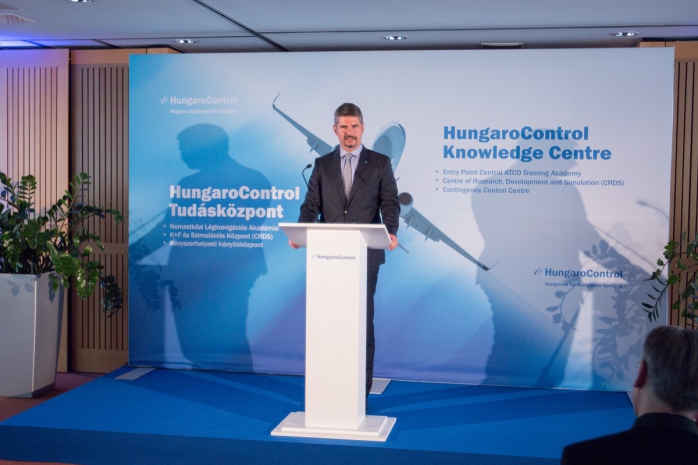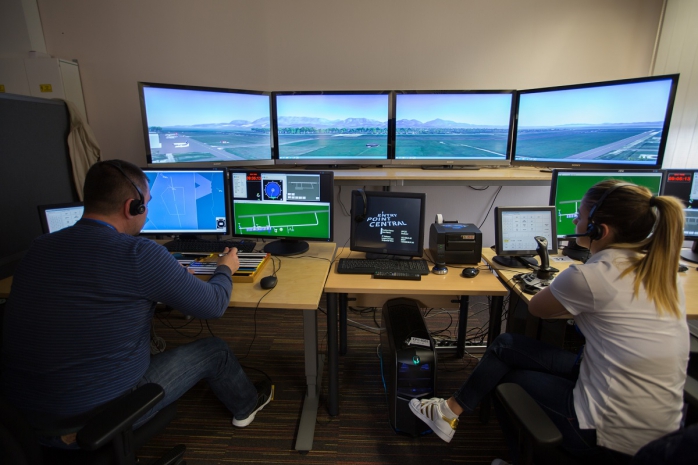Innovation, R&D and ATM Academy – New Integrated Knowledge Centre Advances HungaroControl’s Market Position
The increase in air traffic and the transformation of the European air navigation market call for the development and testing of innovative procedures and new concepts as well as the continuous professional training of air traffic controllers. Taking advantage of the synergies of units that previously operated separately, the now inaugurated Knowledge Centre supports the market position of the company by offering integrated services to other players in the industry. Central and Eastern Europe's most modern Knowledge Centre is home to EPC (Entry Point Central air navigation academy), CRDS (HungaroControl’s Centre of Research, Development and Simulation) and the radar simulation and contingency centre.

EPC (Entry Point Central) is the Budapest-based air traffic controller (ATCO) training academy jointly operated by HungaroControl and Entry Point North, the world’s leading ATCO training centre of the Swedish, Danish, Norwegian and Irish ANSPs, opened in 2011. Entry Point North’s premium training and services comply with the most stringent of international requirements. At EPC, ab-initio students start practical training as early as during the fifth week of the course, using EPC’s simulator. EPC offers students and customers 34 simulator positions and 2 three-dimensional, 180° tower simulators in a training space of 350 square metres.

CRDS operates Central Europe’s largest ATC simulator facility based on the ESCAPE platform developed by EUROCONTROL. Thanks to the capacity upgrade in February 2016, the centre is now capable of conducting large-scale simulations with up to 34 controller working positions and 26 pilot working positions. CRDS is the place where the comfort of 90% human-machine interface (HMI) similarity makes air traffic control officers’ (ATCOs) work easier and more pleasant. On the one hand, the source of scientific analysis is the large quantity of objective data extracted from the system during the simulation. On the other hand, collecting subjective feedback through generic and simulation-specific questionnaires also plays a key role. This way, ATM experts and decision makers will be able to foresee potential changes in human performance and to prevent safety issues related to workload and situational awareness. Air Traffic Controllers and ATM experts from CCL (Croatia Control), SMATSA (Serbia and Montenegro Air Traffic Services) and BHANSA (Bosnia and Herzegovina Air Navigation Services Agency) successfully conducted the SEAFRA (South-East Axis Free Route Airspace) Real-Time Simulation between 16-25 March, 2016 at HungaroControl’s CRDS.

The radar simulation and contingency centre operates with a dual function: on the one hand it is a venue for education and training, on the other hand it is a contingency centre, which can switch to live operations in six hours in case of an emergency, enabling safe ATC operations in the Hungarian airspace. The centre uses the same infrastructure as HungaroControl’s primary control centre, including MATIAS (Magyar Automated and Integrated Air Traffic System), one of the world’s most advanced air navigation software systems, developed jointly with Thales Air Systems.
“Continuous innovation activities have positioned HungaroControl at the forefront of European initiatives to improve flight safety, increase capacity, reduce airline costs, and enhance environmental protection. To this end, the Hungarian ANSP focuses primarily on developments that improve the efficiency of air traffic management, as well as the introduction of up-to-date technologies, both in partnership with other ANSPs, universities and technology providers (including its participation in the SESAR research and development programme) as well as on its own.” – said Mr Kornél Szepessy, CEO of HungaroControl.
Thanks to its team of ATS operations planning experts and ATM system designers HungaroControl’s R&D centre can help offer customised solutions to your ATM challenges.


